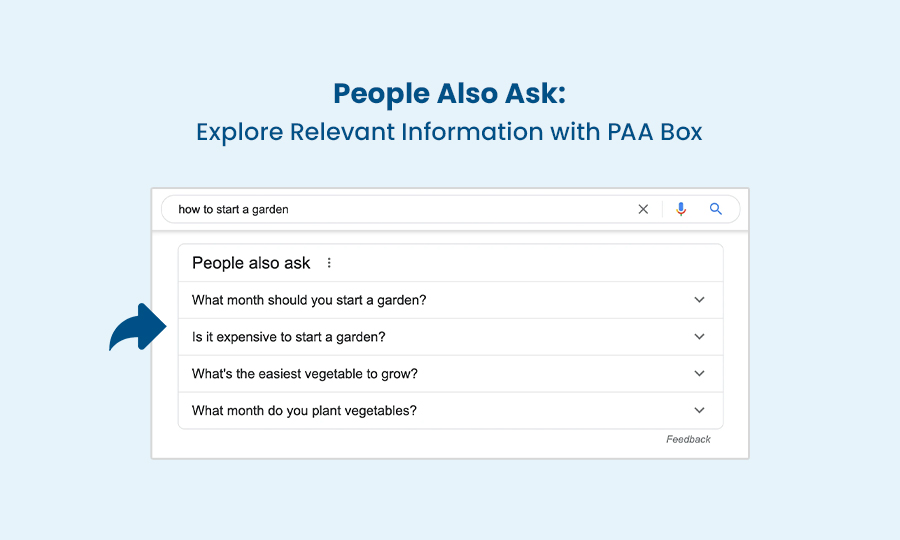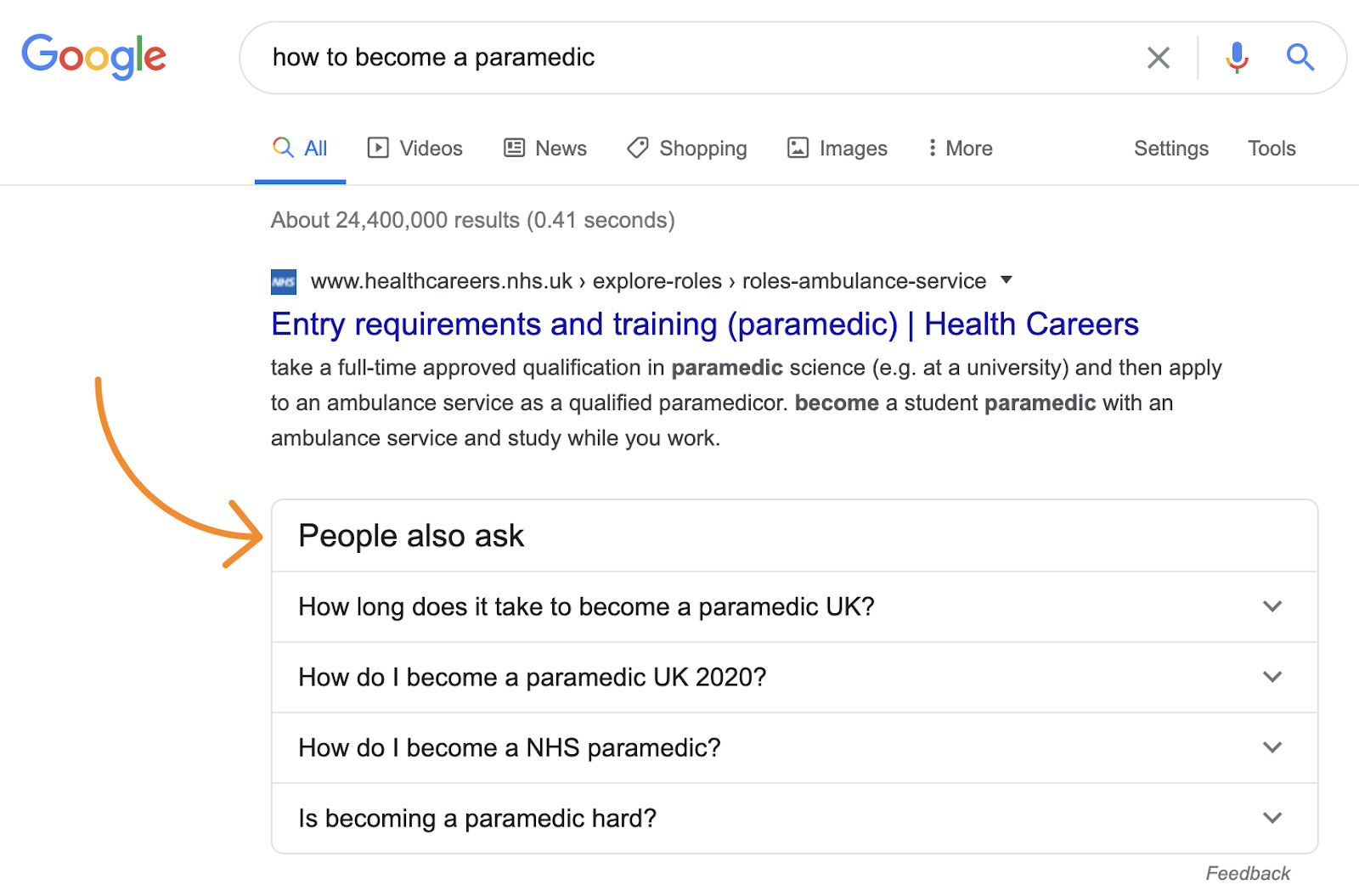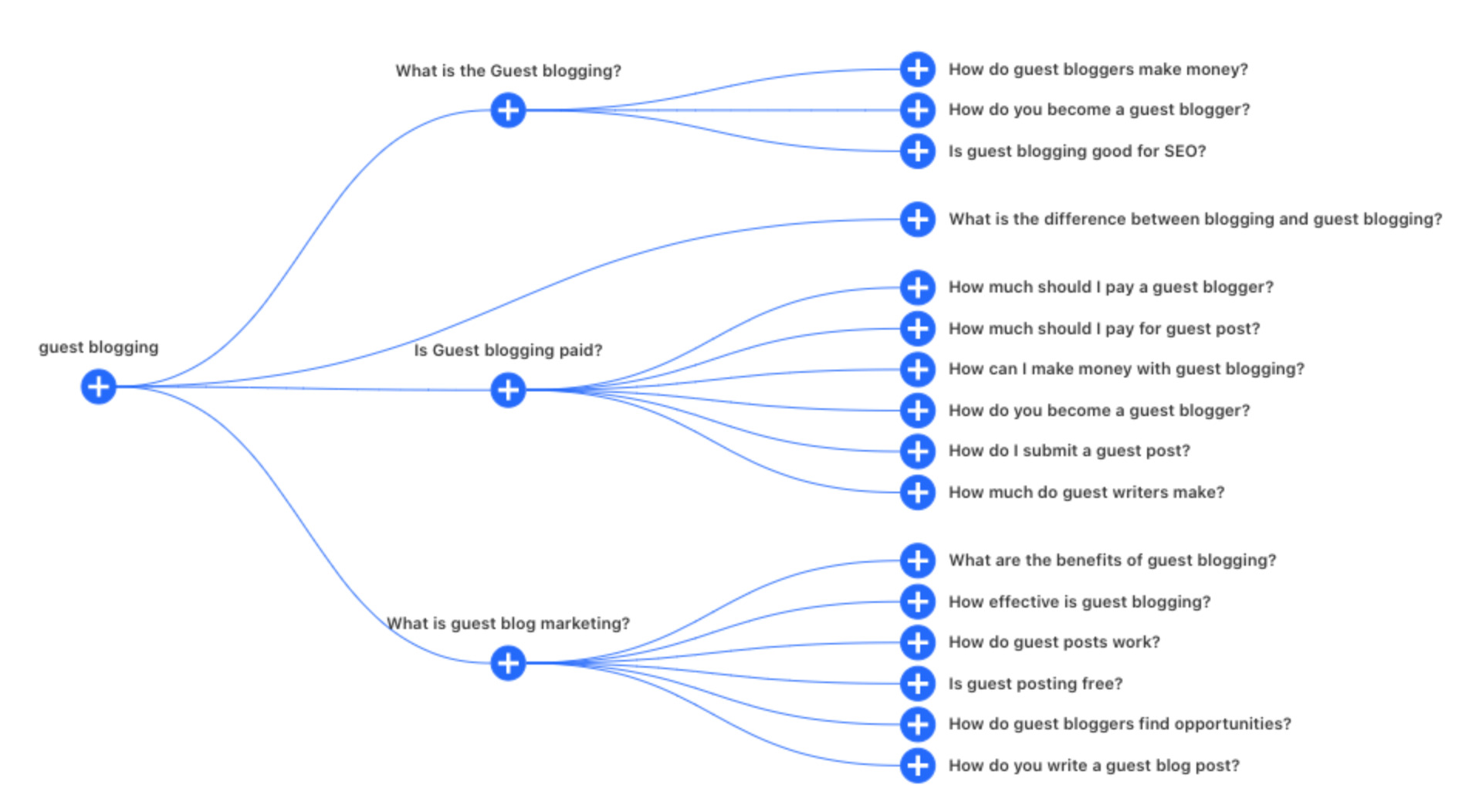Understanding the People Also Ask Feature
The People Also Ask (PAA) feature is a powerful tool in Google’s search engine results pages (SERPs) that provides users with additional information related to their search query. This feature is designed to help users quickly find answers to their questions by displaying a list of related questions and answers. To rank in PAA, it’s essential to understand how this feature works and its significance in the search engine landscape.
When a user submits a search query, Google’s algorithm analyzes the query and identifies related questions and answers that can provide additional context and information. The PAA feature then displays these related questions and answers in a list format, allowing users to quickly scan and find the information they need. By understanding how the PAA feature works, you can optimize your content to increase your chances of ranking in this feature.
One of the key benefits of the PAA feature is that it provides users with a quick and easy way to find answers to their questions. By displaying related questions and answers, the PAA feature helps users to quickly identify the most relevant information and avoid having to click through multiple search results. This feature is particularly useful for users who are looking for quick answers to simple questions or who want to explore a topic in more depth.
To rank in the PAA feature, you need to understand how to optimize your content for this feature. This involves using relevant keywords, phrases, and questions in your content, as well as optimizing your meta tags and descriptions. By understanding how the PAA feature works and how to optimize your content, you can increase your chances of ranking in this feature and providing users with the information they need.
Ranking in the PAA feature requires a deep understanding of how to optimize your content for this feature. By following best practices and using innovative and creative concepts, you can increase your chances of ranking in the PAA feature and providing users with the information they need. In the next section, we’ll explore the importance of keyword research in optimizing for the PAA feature.
Keyword Research Strategies for People Also Ask
Keyword research is a crucial step in optimizing for People Also Ask. By identifying relevant keywords, phrases, and questions, you can increase your chances of ranking in this feature. To start, use tools like Google Keyword Planner, Ahrefs, or SEMrush to identify keywords related to your topic. Look for keywords with high search volume and low competition, as these are more likely to drive traffic to your site.
Next, analyze your competitors’ content to see what keywords they’re using. Identify gaps in their content and create content that fills those gaps. Use tools like Moz or Ahrefs to analyze your competitors’ backlinks and identify opportunities to build high-quality backlinks to your site.
Another important step in keyword research is to identify long-tail keywords. Long-tail keywords are more specific phrases that have lower search volume but are also less competitive. By targeting long-tail keywords, you can increase your chances of ranking in People Also Ask and drive more targeted traffic to your site.
For example, if you’re writing about “how to rank in people also ask,” you could target long-tail keywords like “people also ask optimization tips” or “people also ask SEO strategies.” By targeting these long-tail keywords, you can increase your chances of ranking in People Also Ask and drive more targeted traffic to your site.
Finally, use keyword research tools to identify questions related to your topic. People Also Ask is all about answering user questions, so identifying relevant questions is crucial. Use tools like AnswerThePublic or QuestionDB to identify questions related to your topic and create content that answers those questions.
By following these keyword research strategies, you can increase your chances of ranking in People Also Ask and drive more targeted traffic to your site. In the next section, we’ll explore how to optimize your content for People Also Ask.
Optimizing Your Content for People Also Ask
Optimizing your content to rank in People Also Ask requires a strategic approach. To increase your chances of ranking in this feature, it’s essential to use relevant keywords, phrases, and questions in your content. This involves incorporating the keywords and phrases you’ve identified during your keyword research into your content in a natural and organic way.
One effective way to optimize your content is to use a question-and-answer format. This involves creating content that directly answers user questions, providing clear and concise answers that address the user’s query. By doing so, you can increase the chances of your content being featured in People Also Ask.
Meta tags and descriptions also play a crucial role in optimizing your content for People Also Ask. Ensure that your meta title and description accurately reflect the content of your page and include the target keywords. This will help search engines understand the relevance of your content and increase its visibility in search engine results pages (SERPs).
Another key aspect of optimizing your content is to focus on providing value to the user. People Also Ask is designed to provide users with additional information related to their search query, so it’s essential to create content that is informative, engaging, and relevant to the user’s needs. By doing so, you can increase the chances of your content being featured in People Also Ask and drive more traffic to your website.
When optimizing your content, it’s also essential to consider the user experience. Ensure that your content is easy to read, understand, and navigate. Use headings, subheadings, and bullet points to break up the content and make it more scannable. By providing a positive user experience, you can increase the chances of your content being featured in People Also Ask and drive more conversions.
Finally, it’s essential to keep in mind that optimizing your content for People Also Ask is an ongoing process. Continuously monitor your performance, and adjust your strategy accordingly. Use tools like Google Search Console and SEMrush to track your rankings and identify areas for improvement. By doing so, you can refine your strategy and increase your chances of ranking in People Also Ask.
By following these tips, you can optimize your content to increase your chances of ranking in People Also Ask. Remember to focus on providing value to the user, using relevant keywords and phrases, and creating content that is informative, engaging, and relevant to the user’s needs. With a strategic approach, you can drive more traffic to your website and increase your online visibility.
The Role of Answer Boxes in People Also Ask
Answer boxes are a crucial component of the People Also Ask feature, providing users with quick answers to their questions. An answer box is a highlighted snippet of text that appears at the top of the search engine results page (SERP), typically in response to a question-based search query. The answer box is designed to provide users with a concise and accurate answer to their question, saving them time and effort.
Answer boxes are closely related to People Also Ask, as they both aim to provide users with additional information related to their search query. However, answer boxes are more focused on providing a direct answer to a specific question, whereas People Also Ask provides a list of related questions and answers.
To optimize your content to appear in answer boxes, it’s essential to focus on creating high-quality, informative content that directly answers user questions. Use a clear and concise writing style, and make sure your content is well-structured and easy to read. Additionally, use header tags (H1, H2, H3, etc.) to break up your content and highlight the most important information.
Another key factor in appearing in answer boxes is to use relevant keywords and phrases in your content. Conduct thorough keyword research to identify the most relevant and high-traffic keywords related to your topic, and incorporate them naturally into your content. This will help search engines understand the relevance and accuracy of your content, increasing your chances of appearing in answer boxes.
It’s also important to note that answer boxes are often generated from content that is already ranking well in the SERPs. Therefore, focusing on improving your overall search engine rankings can also increase your chances of appearing in answer boxes. Use a combination of on-page optimization techniques, such as optimizing meta tags and descriptions, and off-page optimization techniques, such as building high-quality backlinks, to improve your search engine rankings.
By understanding the role of answer boxes in People Also Ask and optimizing your content to appear in them, you can increase your online visibility, drive more traffic to your website, and provide users with the information they need to answer their questions. Remember to focus on creating high-quality, informative content that directly answers user questions, and use relevant keywords and phrases to increase your chances of appearing in answer boxes.
By incorporating answer boxes into your People Also Ask strategy, you can take your content to the next level and provide users with the information they need to answer their questions. Whether you’re a business owner, marketer, or content creator, understanding the role of answer boxes in People Also Ask can help you improve your online presence and drive more traffic to your website.
Using Long-Tail Keywords to Rank in People Also Ask
Long-tail keywords are a crucial component of any successful People Also Ask strategy. By targeting specific, low-competition keywords, you can increase your chances of ranking in this feature and driving more traffic to your website. In this section, we’ll discuss the benefits of using long-tail keywords to rank in People Also Ask and provide examples of how to use them effectively.
Long-tail keywords are phrases that have lower search volumes, but are also less competitive. They are often more specific and targeted to a particular topic or question, making them ideal for People Also Ask. By targeting long-tail keywords, you can create content that is more relevant and useful to users, increasing your chances of ranking in People Also Ask.
For example, let’s say you’re a fitness expert and you want to rank in People Also Ask for the topic “how to lose weight quickly.” A long-tail keyword for this topic might be “how to lose weight quickly for women over 40.” This keyword is more specific and targeted to a particular demographic, making it less competitive and more likely to rank in People Also Ask.
Another benefit of using long-tail keywords is that they can help you target specific search queries and increase your chances of ranking in People Also Ask. By targeting long-tail keywords, you can create content that is more relevant and useful to users, increasing your chances of ranking in People Also Ask.
To use long-tail keywords effectively, it’s essential to conduct thorough keyword research. Use tools like Google Keyword Planner or SEMrush to identify relevant long-tail keywords and phrases. Then, incorporate these keywords naturally into your content, making sure to use them in your meta tags, descriptions, and headings.
It’s also important to note that long-tail keywords can help you rank in multiple People Also Ask features. By targeting a specific long-tail keyword, you can increase your chances of ranking in multiple related features, driving more traffic to your website and increasing your online visibility.
In addition to targeting long-tail keywords, it’s also essential to create high-quality, informative content that provides value to users. Use a clear and concise writing style, and make sure your content is well-structured and easy to read. By combining high-quality content with targeted long-tail keywords, you can increase your chances of ranking in People Also Ask and driving more traffic to your website.
By incorporating long-tail keywords into your People Also Ask strategy, you can increase your chances of ranking in this feature and driving more traffic to your website. Remember to conduct thorough keyword research, incorporate long-tail keywords naturally into your content, and create high-quality, informative content that provides value to users.
Creating Content that Answers User Questions
Creating content that directly answers user questions is a crucial step in optimizing for People Also Ask. By providing clear, concise answers to user queries, you can increase your chances of ranking in this feature and driving more traffic to your website. In this section, we’ll discuss the importance of creating content that answers user questions and provide tips on how to do it effectively.
When creating content that answers user questions, it’s essential to focus on providing value to the user. This means creating content that is informative, engaging, and relevant to the user’s needs. By doing so, you can increase the chances of your content being featured in People Also Ask and driving more traffic to your website.
One effective way to create content that answers user questions is to use a question-and-answer format. This involves creating content that directly answers a specific question or set of questions, providing clear and concise answers that address the user’s query. By using this format, you can increase the chances of your content being featured in People Also Ask and driving more traffic to your website.
Another key aspect of creating content that answers user questions is to use relevant keywords and phrases. By incorporating relevant keywords and phrases into your content, you can increase the chances of your content being featured in People Also Ask and driving more traffic to your website. However, it’s essential to avoid keyword stuffing and focus on creating high-quality, informative content that provides value to the user.
To identify user questions, you can use tools like Google Keyword Planner or SEMrush to analyze search data and identify relevant keywords and phrases. You can also use social media and online forums to identify common questions and topics that users are discussing. By understanding what users are asking, you can create content that directly answers their questions and increases your chances of ranking in People Also Ask.
When creating content that answers user questions, it’s also essential to focus on providing clear and concise answers. This means avoiding jargon and technical terms that may confuse users and focusing on providing simple, easy-to-understand answers that address the user’s query. By doing so, you can increase the chances of your content being featured in People Also Ask and driving more traffic to your website.
Finally, it’s essential to remember that creating content that answers user questions is an ongoing process. Continuously monitor your performance, and adjust your strategy accordingly. Use tools like Google Search Console and SEMrush to track your rankings and identify areas for improvement. By doing so, you can refine your strategy and increase your chances of ranking in People Also Ask.
By creating content that directly answers user questions, you can increase your chances of ranking in People Also Ask and driving more traffic to your website. Remember to focus on providing value to the user, using relevant keywords and phrases, and providing clear and concise answers that address the user’s query.
Measuring and Tracking Your People Also Ask Performance
Measuring and tracking your performance in People Also Ask is crucial to understanding the effectiveness of your optimization strategy. By monitoring your rankings and adjusting your strategy accordingly, you can increase your chances of ranking in People Also Ask and driving more traffic to your website.
One of the most effective tools for measuring and tracking your People Also Ask performance is Google Search Console. This tool provides insights into your website’s search engine rankings, including your performance in People Also Ask. By using Google Search Console, you can track your rankings, identify areas for improvement, and adjust your strategy to increase your chances of ranking in People Also Ask.
Another tool that can help you measure and track your People Also Ask performance is SEMrush. This tool provides a comprehensive analysis of your website’s search engine rankings, including your performance in People Also Ask. By using SEMrush, you can track your rankings, identify areas for improvement, and adjust your strategy to increase your chances of ranking in People Also Ask.
When measuring and tracking your People Also Ask performance, it’s essential to focus on the following metrics:
Rankings: Track your rankings in People Also Ask to understand how your content is performing. Identify areas for improvement and adjust your strategy to increase your chances of ranking.
Impressions: Track the number of impressions your content receives in People Also Ask. This metric can help you understand how often your content is being displayed in search engine results pages (SERPs).
Click-through rate (CTR): Track the CTR of your content in People Also Ask. This metric can help you understand how often users are clicking on your content after seeing it in SERPs.
By tracking these metrics, you can gain a deeper understanding of your People Also Ask performance and adjust your strategy to increase your chances of ranking and driving more traffic to your website.
It’s also essential to regularly review and adjust your People Also Ask strategy to ensure it remains effective. By staying up-to-date with the latest best practices and algorithm updates, you can increase your chances of ranking in People Also Ask and driving more traffic to your website.
By measuring and tracking your People Also Ask performance, you can refine your strategy and increase your chances of ranking in this feature. Remember to focus on the metrics that matter, regularly review and adjust your strategy, and stay up-to-date with the latest best practices and algorithm updates.
Common Mistakes to Avoid When Optimizing for People Also Ask
When optimizing for People Also Ask, it’s essential to avoid common mistakes that can negatively impact your performance. By understanding these mistakes, you can create a successful People Also Ask strategy that drives more traffic to your website and increases your online visibility.
One of the most common mistakes to avoid is keyword stuffing. This involves overusing keywords and phrases in your content, which can lead to penalties from search engines. Instead, focus on creating high-quality, informative content that provides value to users.
Another mistake to avoid is poor content quality. People Also Ask is designed to provide users with additional information related to their search query, so it’s essential to create content that is informative, engaging, and relevant to the user’s needs. Avoid creating low-quality content that is thin, duplicate, or irrelevant to the user’s query.
Neglecting user experience is also a common mistake to avoid. People Also Ask is designed to provide users with a better search experience, so it’s essential to create content that is user-friendly and easy to navigate. Avoid creating content that is difficult to read, understand, or navigate, as this can lead to a poor user experience and negatively impact your performance.
Not optimizing for long-tail keywords is another mistake to avoid. Long-tail keywords are phrases that have lower search volumes, but are also less competitive. By targeting long-tail keywords, you can increase your chances of ranking in People Also Ask and driving more traffic to your website.
Not using meta tags and descriptions is also a mistake to avoid. Meta tags and descriptions provide search engines with information about your content, including the title, description, and keywords. By using meta tags and descriptions, you can increase your chances of ranking in People Also Ask and driving more traffic to your website.
Finally, not measuring and tracking your performance is a mistake to avoid. By measuring and tracking your performance, you can understand how your content is performing and make adjustments to your strategy to increase your chances of ranking in People Also Ask.
By avoiding these common mistakes, you can create a successful People Also Ask strategy that drives more traffic to your website and increases your online visibility. Remember to focus on creating high-quality, informative content that provides value to users, and avoid neglecting user experience, not optimizing for long-tail keywords, not using meta tags and descriptions, and not measuring and tracking your performance.
By following these tips, you can avoid common mistakes and create a successful People Also Ask strategy that drives more traffic to your website and increases your online visibility. Remember to stay up-to-date with the latest best practices and algorithm updates, and continuously monitor and adjust your strategy to ensure optimal performance.







